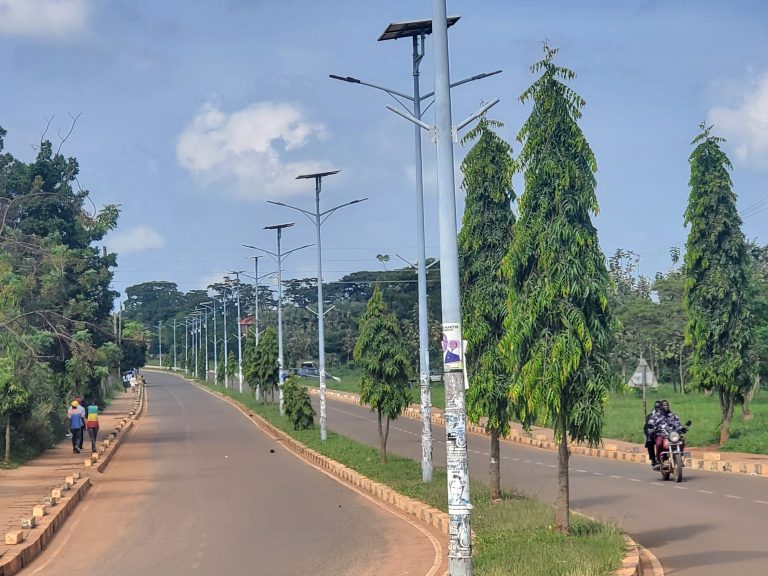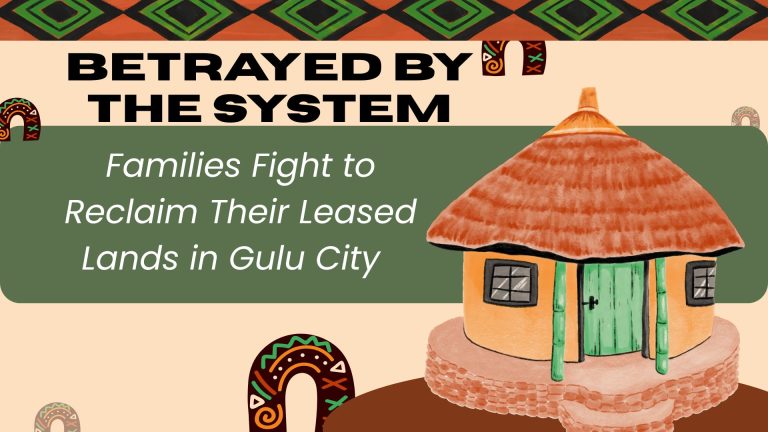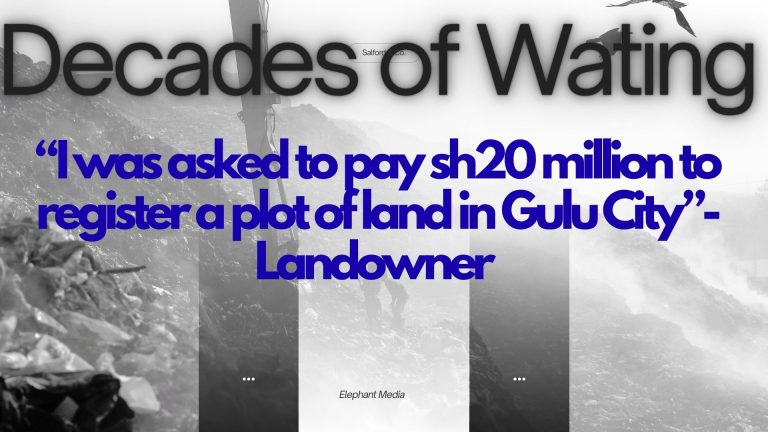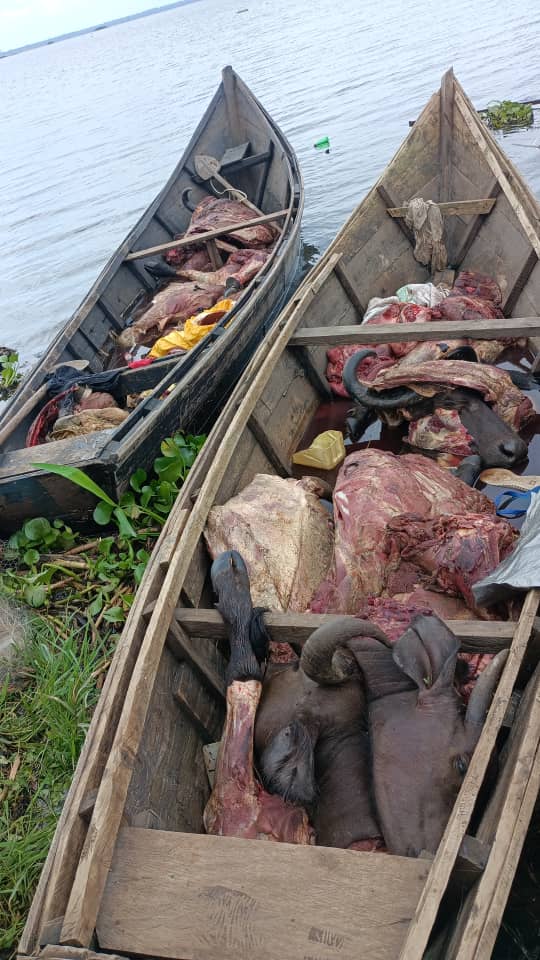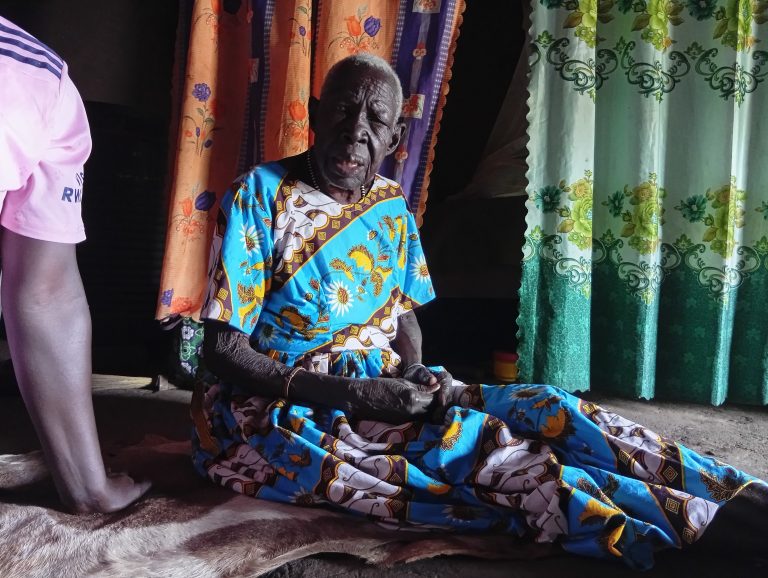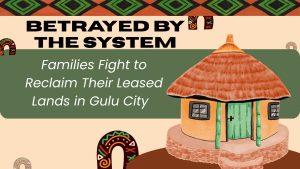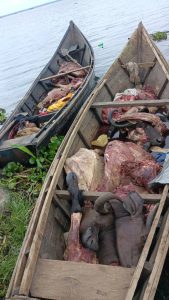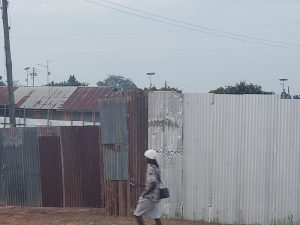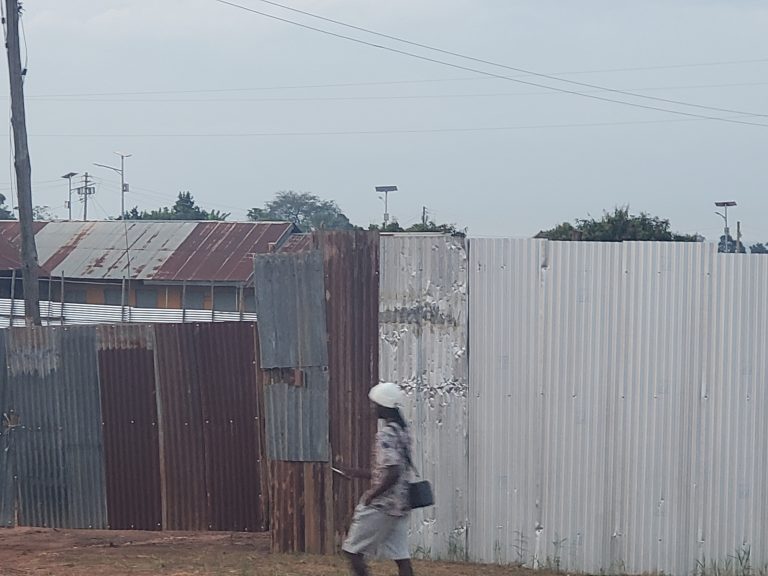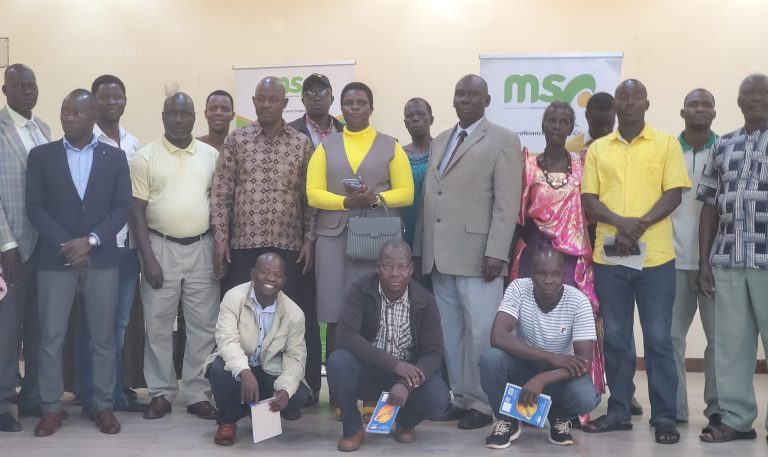Targeted training is empowering healthcare providers to communicate effectively with deaf patients, improving diagnosis, treatment, and trust.
By Chowoo Willy
At St. Mary’s Hospital Lacor in Gulu, a young deaf mother arrives at the maternity ward, visibly anxious. But this time, there is hope. Susan Apiyo, who recently completed a sign language training course, greets her with calm, purposeful hand gestures. The patient smiles. Understanding has arrived—not through words, but through hands.
Susan Apiyo, a midwife at St. Mary’s Hospital Lacor, shared a deeply emotional transformation. “Before this training, I couldn’t even ask deaf mothers their names. I felt helpless. Now I can introduce myself, ask about pain, and give clear medication instructions.”
Apiyo remembers one patient vividly. “A pregnant mother, also deaf, was so grateful. She came to her department and needed help, “I worked on her and she promised to return to deliver with me because I handled her very well at the hospital. That’s what sign language has done—restored trust.”
However, this was not the case for Apiyo for her 4 year she has spent working in the hospital. “I am so happy that I am now able to help the deaf patients, I can know what their problems are, and they can share with me freely”, she notes.
Apiyo is among the 16 medics who recently graduated in basic health sign language communication skills to enable them to directly and effectively communicate with deaf patients to improve healthcare outcomes and experiences. This is under Facilitating Accessible Communication Easily through Sign Language ( FACES) project.
This project aims to empower healthcare workers at St. Mary’s Hospital Lacor-Gulu City with basic health Sign Language communication skills to enable them directly and effectively communicate with the deaf patients to improve healthcare outcomes and experiences.
She expresses her excitement that has now moved away from the manual exchange of notes with patients who could write to signing, which makes her communication easy with the deaf patients.
Voice 1: Apiyo Susan a midwife at Lacor hospital share her excitement upon learning sign language,
Lives Already Changing
This quiet revolution is unfolding across the Acholi sub-region, where health workers are being equipped with basic Ugandan Sign Language (USL) skills to serve deaf and hard-of-hearing patients. It’s a significant step toward addressing one of healthcare’s most invisible inequalities.
For Concy Doreen Adong, a nursing assistant at Lacor Health Centre Opit, an annex of St. Mary’s Hospital Lacor in Omoro District, the impact of the training was immediate. “We have three deaf clients who come monthly for ARVs,” she shares. “Before, we used to struggle with notes. But last week, one of them smiled when I asked about her symptoms using sign language. She felt seen.”
This narrative is not different from others. Adong used to have a challenge talking with the deaf who usually come to the health unit. She narrates her experience working with such kind of patients before receiving basic health sign language communication.
Voice2: Adong Concy Doreen, a nurse at Lacor Health Centre III Opit tells us how she is now using sign Language to provide inclusion
At Lacor Health Centre III in Pabbo town council, Amuru District, Judith Akello, a nurse at the health unit, recalls an encounter with a 12-year-old deaf boy. “He came with a list of items like shoes and sugar. I could now understand what he wanted. The training gave me the signs.”
Akello notes that the health unit had challenges communicating with deaf patients as there was nobody to help them attend to them. Most of them missed what they wanted from the health unit
Vocie3 : Judith Akello, another nurse at Lacor Health Centre III Pabbo shares the challenges they get while interacting with deaf patients.
cue out
Kitara Elio, a nurse at St. Mary’s Hospital, reflects on personal growth. “Before, I just guessed what my deaf cousin was trying to say. Now, I sign. My family is closer. I even practice with local deaf people in my community.”
Voice4 : Kitara Elio is a nurse at Lacor hospital shades more light on how he is now able to speak to the deaf patients.
A Long-Standing Barrier
Uganda is home to an estimated 1.29 million deaf individuals, many of whom live in rural areas with limited access to inclusive services. In Northern Uganda’s Acholi sub-region, where conflict, poverty, and displacement have further strained health systems, deaf patients often face additional hurdles—misdiagnosis, exclusion, and silence.
The graph shows highest hearing difficulty rates are seen in Lango (11.8%), Kigezi (11.5%), Acholi (10.4%), and Tooro (11.2%); all comfortably above the national average of 7.8% and Kampala has the lowest rate at 2.1%, far below the national average.
These figures reflect the percentage of adults experiencing hearing challenges across regions, revealing notable geographic disparities
In the Acholi sub-region, especially in rural areas of , deaf patients have struggled for years to explain symptoms, understand diagnoses, or even give informed consent, the problem is amplified by the rural setting and limited availability of inclusive health services.
Deaf patients often face life-threatening delays or misdiagnoses due to a lack of communication tools and interpreters in hospitals. Many avoid seeking care altogether
Opiro Richard, 27, a resident of Bungatira in Gulu City, is one such deaf patient who was misdiagnosed when he sought medical care at Gulu Regional Referral Hospital.
Feeling unwell and experiencing chills, Opiro Richard visited Gulu Regional Referral Hospital in 2024. However, due to communication barriers, he was mistakenly tested for HIV/AIDS though he tested negative. He recalls the confusion and frustration vividly. Opiro points out that many deaf patients remain unaware of their HIV status, and those who are HIV-positive often struggle to access antiretroviral treatment due to the lack of sign language communication at health facilities.
“We have our members dying silently,” Opiro reveals. “There are very few counsellors who know sign language to communicate with them; so many deaf people die at home rather than in hospitals.”
He gave an example of a patient who refused to be brought to the hospital and died from home in the area of Pece-cubu , Laroo-Pece , in Gulu City.
Opiro adds that deaf patients often spend the entire day in queues without food, only to miss out on treatment, which discourages more from coming to the health units. This nasty experience has never made him go back to the Gulu regional referral hospital again.
Freddy Odong, a psychologist at Gulu Regional Referral Hospital at Mental Health Unit, said recently that he is still upset up to now when he failed to help a deaf person who came to the unit seeking for help, “there was no way I could help him, we struggled, and failed to get anybody to help us translate what he was saying, he could not write nor neither read, the patient left the hospital without any help and he has never returned to the unit again.”
“We used to rely on writing notes or guessing what patients meant,” recalls Judith Akello, a nurse at Lacor Health Centre III in Pabbo. “Even telling a caregiver to tepid sponge a child with fever was nearly impossible.”
Until recently, none of the major health facilities in the region had staff trained in sign language. This reality contributed to delays, miscommunication, and sometimes complete avoidance of healthcare by deaf individuals.
In 2024, the Ministry of Health announced plans to recruit sign language interpreters for deployment in all 3,194 government Health Centre IVs and IIIs across 146 districts, aiming to bridge communication gaps with deaf and hearing-impaired patients. However, this intervention is yet to materialize, as most government hospitals and health units continue to operate without officially recruited sign language interpreters.

A Groundbreaking Intervention
Enter Sign Language for All, a grassroots initiative led by Sound of Silence Africa Initiative with support from the U.S. Mission in Uganda through YALI Alumni Chapter of Uganda under Visibility Fund Phase 4 and Institute of Cerba through Lancet Laboratory Africa. The project targets health workers from Gulu and Lira cities. Under FACES project. they have trained 16 health workers at St. Mary’s Hospital Lacor and its two annexes—Lacor Health Centre III in Pabbo (Amuru District) and Opit (Omoro District), 6 extension medical workers and 10 medics from Lira.
The training aimed to empower healthcare workers with the basic health sign language skills, enabling them to directly and effectively communicate with Deaf patients to improve healthcare outcomes and experience.
Alex Ogwal , Chief Executive Officer -CEO Sign Language for ALL and Lead Team , FACES Project, said they have received a $890 through YALI Alumni Chapter of Uganda , visibility Fund Phase 4 and 2000 euros from Institute Cerba. Ogwal says the project was aimed at supporting frontline health workers serving in hospitals.
The grant wasn’t that big, but our goal is to improve services at the national hospital level,” Ogwal explains. “Deaf patients should feel happy and valued when they receive proper care and leave the hospital satisfied.”
Ogwal, who lost his hearing at 15, understands the stakes firsthand. “When I became deaf, the world fell silent. Not because I couldn’t speak, but because no one could listen.”
Pier Paul Ocaya, Administrator at St. Mary’s Hospital Lacor, lauded the initiative. “This hospital used to serve over 300,000 people annually. As we know, effective communication is vital for quality health service delivery. Without effective communication, we risk wrong diagnoses, lost time, and broken trust.”
Ocaya adds that this cohort shall be a bridge between the communities and the hospital, management of deaf people, both from the community and the hospital.
He admitted that there were challenges in handling deaf patients who used to come to the hospital because they didn’t have people who could talk with them, but the training would help improve the diagnosis and management of such patients at the hospital.
Ocaya adds that this newly trained cohort will serve as a vital bridge between the hospital and the deaf community—improving not only communication but also the quality of care.
He admits that prior to the training, the hospital struggled to support deaf patients due to a lack of staff who could effectively communicate in sign language. “We often faced delays, wrong diagnoses, and frustrated patients,” he said. “But this training gives us hope. It will significantly improve how we manage and care for deaf people, both from the community and within our hospital.”
He cited a startling statistic: 90% of health facilities in Northern Uganda, both government and private, have no trained sign language interpreter. “This training reduces that gap. We are proud to be part of the solution.”
The Senior Principal Nursing Officer at St. Mary’s Hospital Lacor, Lajara Betty, has commended the Sign Language for All initiative for equipping frontline health workers with skills in sign language, calling the training a “breakthrough moment” for inclusive healthcare in Northern Uganda.
Speaking at a graduation ceremony for 16 medical workers trained under the project, Betty expressed deep gratitude to Sound of Silence Africa Initiative and its partners, including the Young African Leaders Initiative (YALI) and the U.S. Mission in Uganda, for choosing Lacor Hospital.
“Sometimes we think Lacor Hospital is forgotten, but at least you remembered us,” she said. “This is the beginning of something greater—we are going to move miles from here.”
Betty revealed that the hospital had strategically selected participants from across departments—starting from the gate to the pharmacy—to ensure continuous support for deaf patients throughout their treatment journey. Among those selected, there are 14 nurses, one pharmacist and an Askari at the hospital.
“We thought through the hospital’s flow: from the gate, to records, to treatment, to pharmacy. That’s why every department is represented in this team,” she said. “We also included one person from each of our three health centers.”
Voice 5: Sr Lajara Betty, Senior Principle Nursing officer at Lacor hospital talks about more support to the hospital.
Adding to the institutional call for deeper investment in inclusion, Atukwase Ramadhan, Partnerships and Resource Mobilization Chairperson for YALI Uganda Chapter and Founder of Boundless Lives International, emphasized the long-term significance of the project:
“This FACES project targets health workers to equip them with basic sign language skills, because they’re at the center of serving the community. Many deaf people are turned away simply because no one understands them. This training is bridging that communication gap.”
Voice6: Atukwase Partnerships and Resource Mobilization Chairperson for YALI Uganda Chapter , explains why they supporting the initiative.
He underscored its sustainability, “when you train one nurse, you’ve trained for generations. That nurse will carry these skills wherever they go and help any person with hearing impairment they encounter.”
The ripple effect of the sign language initiative is now reaching academic corridors. C,hief at Directorate of Research and Graduate Training at Gulu University Associate ProfessorKomakech Daniel, Director of Peace and Strategic Studies at Gulu University, announced the university’s plan to establish a Center for People with Special Needs—a direct response to Uganda’s directive that all public universities develop internal capacity to accommodate students with disabilities, including those requiring sign language.
“We looked around as a management team and realized we have done a lot, but not in sign language,” Dr. Komakech said. “It reminded us of a student I used to play basketball with—he struggled in class because no one could communicate with him. That moment stayed with me.”
Gulu University, like many institutions, has often referred students with special needs to Kyambogo University, which specializes in inclusive education. But this practice is no longer sustainable.
“The government has instructed us: all public universities must develop the capacity to train and support students with special needs. That is no longer negotiable,” Dr. Komakech emphasised.
He described how meetings with Alex Ogwal of Sound of Silence Africa Initiative catalysed the university’s plan to integrate sign language education into its system, starting with staff transformation.
“We agreed that before we build infrastructure, we must build attitude. That means starting with our professors, lecturers, academic registrars—even our cleaners. Everyone must learn the basics of sign language.”
Joan Mugaba, who represented the US Mission and the Grant Manager of YALI Alumni Chapter Uganda -Visibility Fund Phase 4, which partnered with Sound of Silence Africa initiative through a $2,000 Visibility Fund, praised the initiative: “This is cartoon money by donor standards, but look what it achieved. Inclusive healthcare, empowered medics, inspired partners.”
Voice7: Mugaba the Grant Manager of YALI Alumni Chapter Uganda -Visibility Fund Phase 4, expresses her excitement over the success
Hands That Heal
When a nurse uses her hands to communicate care, she doesn’t just bridge silence—she restores dignity. The Sign Language for All project is proof that inclusive training can transform health outcomes, reduce fear, and empower the deaf community.
As one deaf youth leader in Gulu said, “We are no longer invisible. When medics sign to us, they are saying; we belong here, too.”
Akanyo Betty, a young deaf woman from Ariaga Cell in Gulu City, could not hide her excitement about the initiative to train medics in sign language. Having previously faced denial of services at health facilities due to communication barriers, she says, “We feel loved, and this will help us a lot when we come to Lacor.”
Akanyo used to hire a sign language interpreter whenever she visited the hospital to ensure she was understood and received proper care. However, she says this was not sustainable, as it is costly. Most sign language interpreters charge between Sh100,000 and Sh150,000 per visit, depending on the circumstances.
Otober Eric, one of the sign language interpreters who has been supporting the deaf community across various settings, says many deaf individuals are too poor to afford interpretation services because they are unemployed.
“We often volunteer to help them; in hospitals, public places, and even in court,” he explains. “It’s challenging, but it’s something we’ve been doing for years out of compassion and commitment.”
Through partnership, policy, and purpose, Acholi is showing that health equity begins with the language of inclusion.
Health Rights for All
Uganda’s Persons with Disabilities Act (2020) guarantees accessible healthcare and mandates the use of reasonable accommodations, including sign language. Similarly, the Ministry of Health’s Community Health Extension Strategy (2021–2025) encourages inclusive service delivery for marginalized groups.
These efforts are aligned with SDG 3 (Good Health and Well-being) and SDG 10 (Reduced Inequalities), which call for universal health coverage and equal access for people with disabilities.
However, most rural health facilities in Uganda remain unprepared to serve deaf patients, and interpreters are not yet integrated into the national healthcare workforce. This is an area where the government needs to invest more.
Openy Samuel, an advocate of the High Court and a leading expert in disability rights, urges the Uganda government to implement a comprehensive policy on the inclusion of deaf individuals in the healthcare system. His call to action highlights the ongoing challenges faced by the deaf community in accessing essential medical services due to a lack of sign-language interpreters in healthcare facilities.
Openy emphasizes the critical need for a clear and enforceable policy that ensures all healthcare facilities in Uganda are equipped with trained sign language interpreters. “The absence of interpreters is not just a matter of inconvenience; it is a violation of the rights of deaf individuals to access healthcare services,” he stated. “This systemic oversight must be addressed urgently to prevent further marginalization of the deaf community.”
From hospital wards to university halls, a quiet revolution is underway in Acholi. Nurses, administrators, and educators are learning to listen with their eyes and speak with their hands.
It’s a new language of healing; one that ensures no one is left behind. And in that silent space, something powerful is growing: dignity, trust, and health for all


